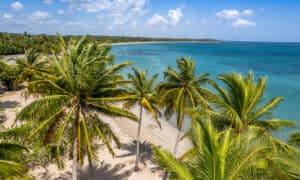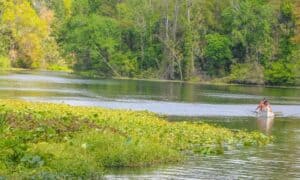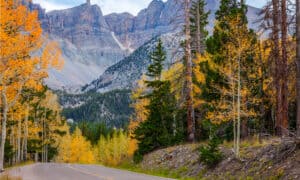Have you ever wanted to go on a helicopter ride over a 5,604-foot-wide waterfall, on a game drive to see the Big Five or fishing in the African savanna? If so, you may want to plan your next trip to Zimbabwe. There are 11 beautiful national parks in Zimbabwe under the management of the Zimbabwe Parks and Wildlife Management Authority (Zimparks). This article will explore 6 of them and describe what activities there are and what animals to look out for.
1. Victoria Falls National Park

The Victoria Falls are one of the largest waterfalls in the world and the highlight of Victoria Falls National Park.
©Eva Mont/Shutterstock.com
Victoria Falls National Park is in northwestern Zimbabwe and is the country’s most famous park because one of the world’s largest waterfalls is towering within. Victoria Falls became a UNESCO World Heritage Site in 1989 and is one of the seven natural wonders of the world. This magnificent waterfall is 355 feet tall and stretches 5,604 feet across! In addition to this beautiful landmark, Victoria Falls National Park consists of 9.03 square miles of lush area. The primary ecosystem is dense rainforests that are watered by the spray from the falls.

Although rarely seen, leopards inhabit the rainforests surrounding Victoria Falls.
©Rudi Hulshof/Shutterstock.com
In the park, people can engage in many thrilling activities. After viewing the falls, tourists can go on a gorge swing, bungee jumping, white-water rafting, or on helicopter rides. Wildlife enthusiasts can also look out for baboons, warthogs, and monkeys which are prolific in the park. On rare occasions, the lucky nature lover may spot a leopard. After all these adventures, tourists can relax, go for a swim, and spend the night at the beautiful Zambezi Lodges.
2. Hwange National Park
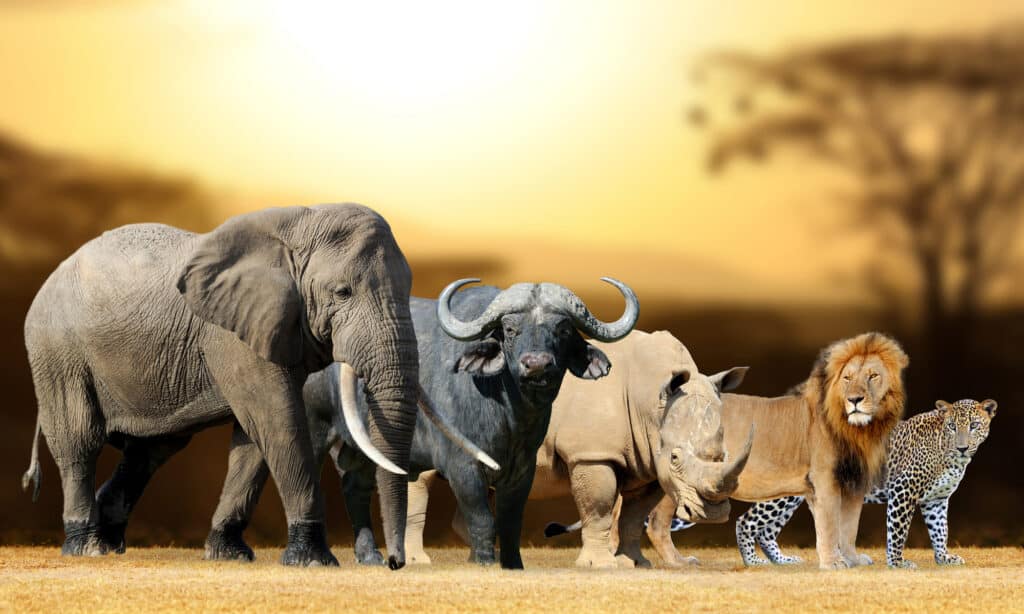
The Big Five, including elephants, water
buffalo
, black rhinos, lions, and leopards, all live in Hwange National Park.
©Volodymyr Burdiak/Shutterstock.com
The iconic Hwange National Park is the largest park in Zimbabwe. In fact, it is larger in area than the Bahamas, clocking in at 5,656 square miles! This massive area is home to the largest population of elephants in Zimbabwe and the largest population of endangered African wild dogs in all of Africa. Other interesting residents include the rare roan antelope and sable, as well as four of the Big Five – elephants, lions, leopards, and water buffalo.
There are many fun ways to make the most of your visit to Hwange National Park. If you wish to get up close with the wildlife, there are walking safaris, game drives, and picnic sites available. People can also go fishing and camp at one of 3 different campsites- Main Camp, Sinamatella, and Robin’s Camp. The park also has opportunities to experience local history and culture by visiting Stone Age and Iron Age archaeological sites. Such sites include animal engravings, rock paintings, and stone-walling sites like Mtoa and the Bumbasi National Monument.
3. Mana Pools National Park
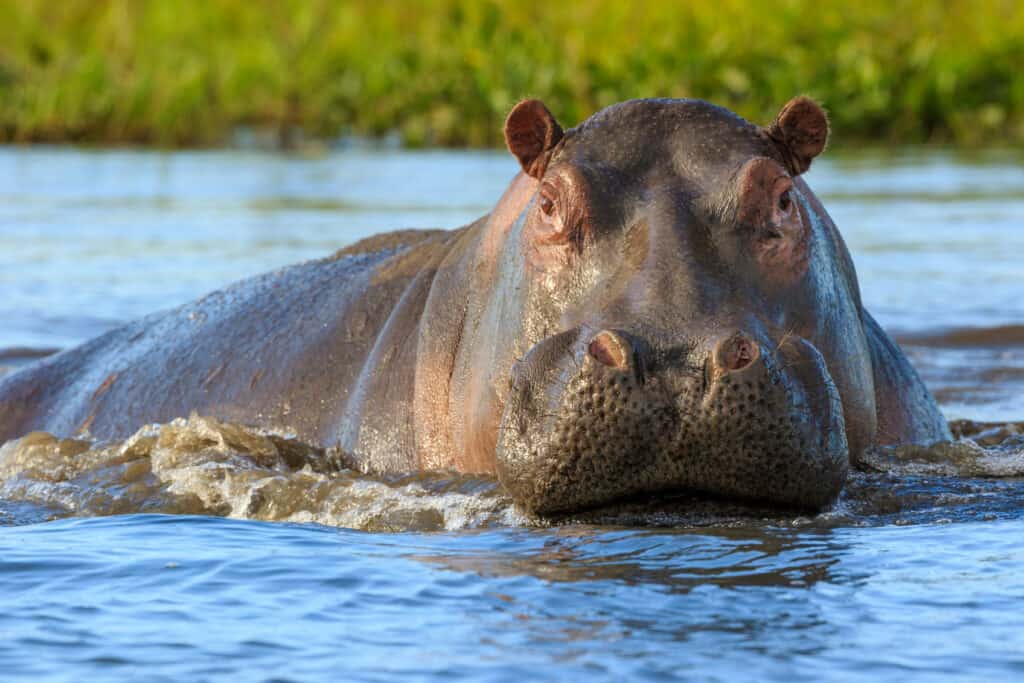
The large pools in Mana Pools National Park are home to many hippos, which are very large, aggressive animals.
©Radek Borovka/Shutterstock.com
Mana Pools National Park is a wildlife enthusiast’s Eden. It is in the northernmost part of Zimbabwe along the Zambezi River. The park’s total area is 848 square miles and includes 5 safari areas. Mana Pools National Park earns its name because “mana” means “four” in the Shona language and there are four large water pools that exist in the park – Green Pool, Chisasiko Pool, Chine Pool, and Long Pool, the largest. These bodies of water support large hippo populations, crocodiles, and aquatic birds. The park also has lions, elephants, water buffalo, leopards, painted dogs, various antelope, and over 380 bird species.
Visitors to Mana Pools National Park will have a great experience. There are guided walking safaris, unguided walks, and game drives. There are also opportunities to go canoeing and fishing. Overnight guests can stay at tented campsites or developed campsites after their long day of adventures.
4. Gonarezhou National Park
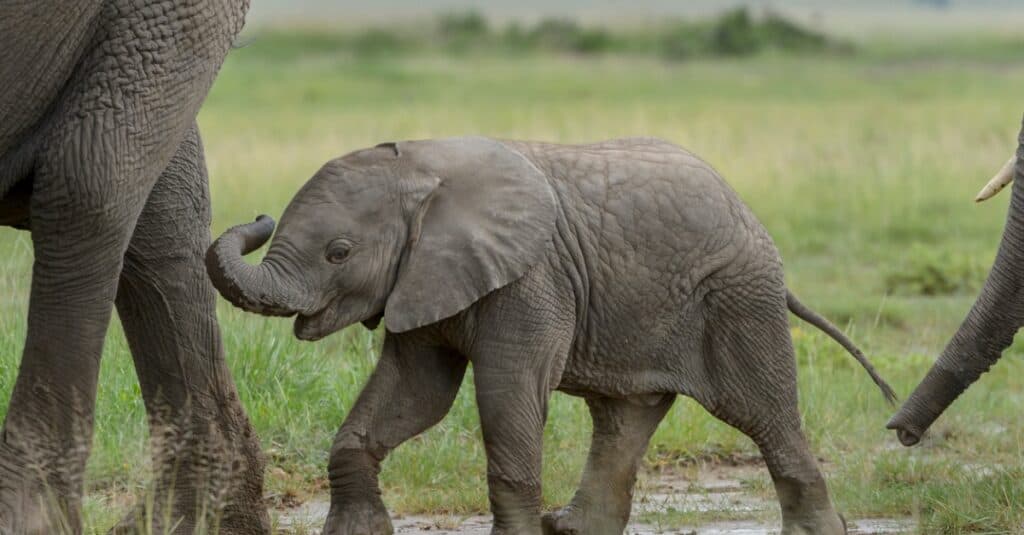
There is a large population of elephants in Gonarezhou National Park, also known as “Place of Elephants”.
©iStock.com/AndreAnita
Gonarezhou National Park is an elephant lover’s paradise. It is the second largest national park in Zimbabwe with an area of 1,948 square miles and its name translates to “Place of Elephants” in the Shona language. The park is home to many elephants and the other Big Five animals – leopards, black rhinos, lions, and water buffalo. There are over 100 mammal species, 400 bird species, and 50 fish species in Gonarezhou National Park. The terrain is primarily grasslands, but also features woodlands and large baobab trees.
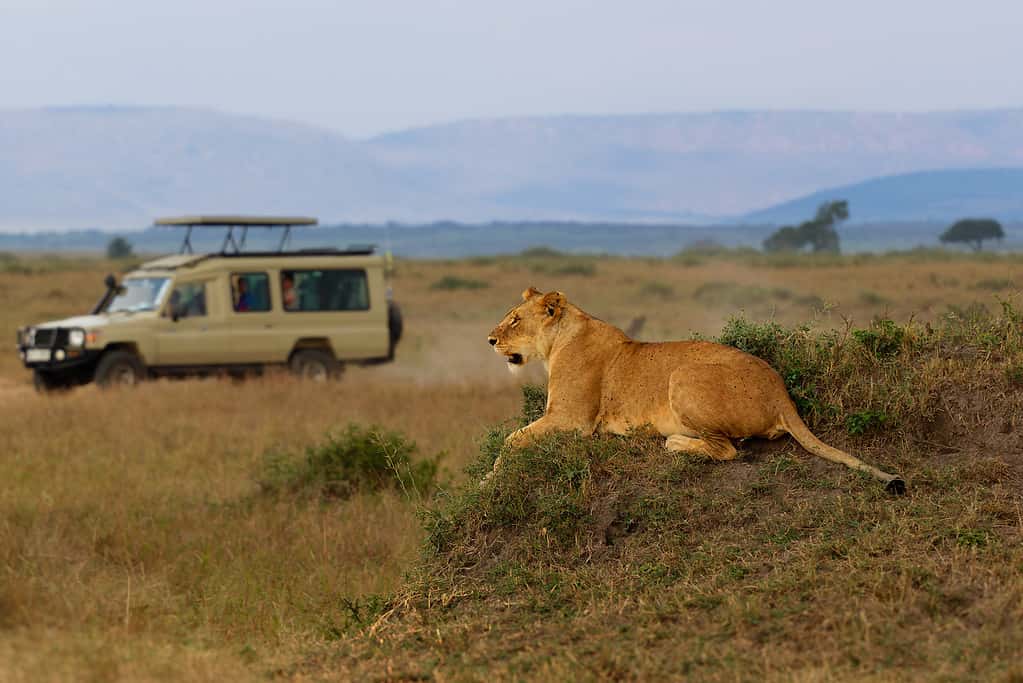
Going on game drives is a great way to see wildlife, including the Big Five, in Gonarezhou National Park.
©iStock.com/phototrip
In the park, visitors can go on game drives, stop at viewing platforms, and go fishing. If one wishes to stay in the park overnight, there are bush campsites and developed campsites. It is cooler in the winter and autumn months in Gonarezhou National Park. Warm clothing is recommended during these seasons especially for campers.
5. Chimanimani National Park
The next national park to explore in Zimbabwe is Chimanimani National Park. This park holds the nickname “Hiker’s Paradise” for a reason. The 66-square-mile expanse in eastern Zimbabwe is home to many well-kept hiking trails that allow the nature lover to explore diverse flora and fauna. The park is home to 30% of the country’s total biodiversity and 2,182 plant taxa. Wildlife is less plentiful but includes elands, bushbucks, blue duiker, and more. Notable elements of the landscape include montane forests, springs, and waterfalls like the Bridal Veil Falls.

There are two caves in Chimanimani National Park where visitors can camp.
©Yury Birukov/Shutterstock.com
In the park, there is plenty for the eager visitor to enjoy. In addition to guided and unguided hiking, tourists can experience the unique area by visiting the Eland Sanctuary in the park. One can also engage in nature walks, plant identification excursions, birdwatching, camping, and picnics. During the rainy season, however, flash floods can be dangerous, and campers are recommended to not camp near rivers. Popular camping locations are Terry’s Cave and Peter’s Cave.
6. Chizarira National Park
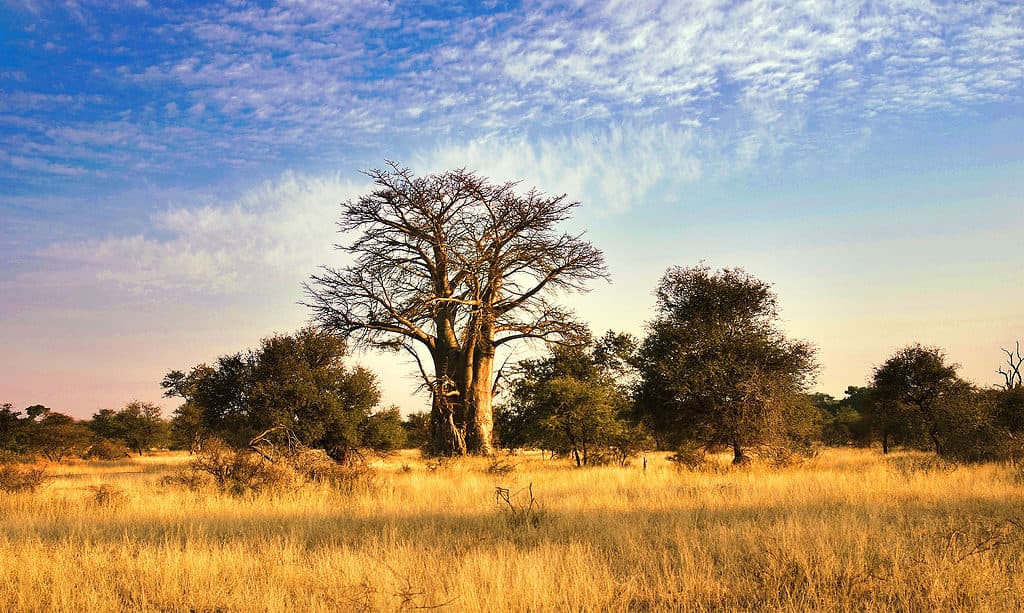
Chizarira National Park has many large baobab trees like this one.
©meunierd/Shutterstock.com
The next beautiful national park in Zimbabwe is Chizarira National Park. Those looking for an action-packed African safari can find that in this 737.5 square mile park. This park is the fourth largest in Zimbabwe. The terrain includes many beautiful gorges, natural springs, plains, and rocky areas. It overlooks the Zambezi Valley and upper waters of Lake Kariba.
The unique area is home to more wildlife than Chimanimani National Park. Notable mammal species are lions, leopards, buffalos, and elephants. Additional rare mammals are roan antelope, sable, and klipspringer. The avid birdwatcher should also consider a safari in Chizarira National Park because it is home to over 360 bird species. Amongst these many species are the rare Taita falcon and Angolan pitta. In addition to viewing this majestic wildlife, adventurers can embark on gorge walks and utilize one of the park’s four campsites- Jeff’s Camp, Mucheni View, Kaswiswi Camp, and Mabola Camp.
The photo featured at the top of this post is © Martin Mecnarowski/Shutterstock.com
Thank you for reading! Have some feedback for us? Contact the AZ Animals editorial team.



